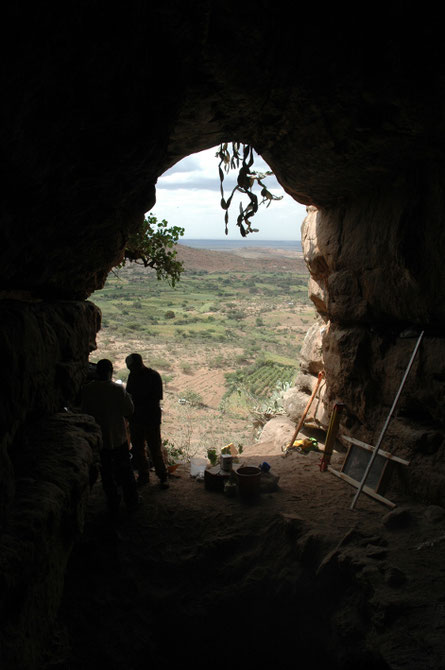
This team paper, published in PLOS ONE last Friday, presents recent sedimentological and dating results from the sequence of Goda Buticha, southeastern Ethiopia, which yield new data on human occupation of the region during the period 65,000 to 1,000 years ago.

The recent paper (Tribolo et al., 2017), written by an international team of researchers from Ethiopia, France, Israel and the USA presents new sedimentological analyses and dating results, relying on a combination of dating methods: Optically Stimulated Luminescence (OSL) dating of the sediments and radiocarbon dating of charcoal. This allowed to document a securely-dated archaeological sequence with ages ranging from ca. 65,000 to 1,000 years ago. In addition, a long hiatus in sedimentation and human activity is present between 25,000 and 8,000 years ago, which corresponds to a generally dry period in the area. Continuity of human occupation may not have been possible in this area during that time.
Update: 02/02/2017. More information here, on the website of the Department of Archaeology of the University of Cambridge.
The research was conducted under the permit of the Authority for Research and Conservation of Cultural Heritage (ARCCH, Ethiopia) and funded by the French National Research Agency, the Hebrew University of Jerusalem, the National Geographic Society, the Wenner-Gren Foundation, the Regional Priority Program "Heritage, Resources, Governance", the Smithsonian's National Museum of Natural History Small Grants Programme, the Doctoral School of the Muséum national d'Histoire naturelle (Paris), and the European Union's Horizon 2020 research and innovation programme under the Marie Sklodowska-Curie grant no 655459.

